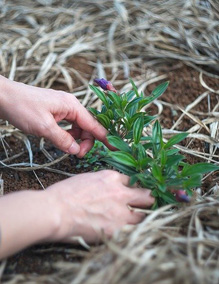A garden isn’t only for fresh air and homegrown food. It can also bring in extra income if you know what to grow and how to sell it. This guide on how to make money from your garden gives you ideas you can start small with and grow over time. Ready?
How to Make Money Gardening
Your garden has more potential than you might think. The ideas below are a solid starting point if you want to explore how to make money gardening:
Start with microgreens
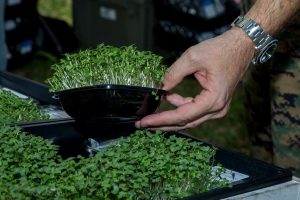
Microgreens are one of the easiest ways to test whether selling plants or produce is for you. Go for radish, pea shoots, or sunflower. They don’t need a huge setup; a few trays, soil, and seeds are enough to get going.
Grow them indoors on a windowsill or use a small, sheltered spot in your backyard. You can branch out to mixes that stand out in your local market. You might even find local places in your town or neighbours nearby who’d be keen to buy.
Sell edible and medicinal weeds

There’s a market for dandelion, nettle, and chickweed. Dandelion roots can be roasted for coffee. Nettles are used in teas and soups, and chickweed often ends up in salads or skin balms.
If you decide to sell them, pick only those from clean soil, away from roads or areas treated with chemicals. Wash them well and plan how you’ll pass them on—fresh bunches, dried leaves, or roots? There could be small businesses or even neighbours nearby who’d be interested if you let them know.
Raise and sell seedlings
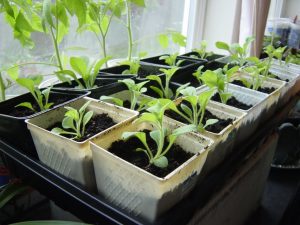
Not everyone has the time or setup to grow from seed, and that’s where you can step in. Tomato, pepper, and herb seedlings are always in demand. You only need trays, compost, and a bit of space with enough natural light to grow your first batch.
Add labels with the plant name and a short note like “best for pots” or “needs full sun”. Local car boot sales, markets, or even neighbours can be your first buyers.
Tip: Give each one room to root, and don’t pack them too close. Buyers can spot the difference between weak plants and strong ones. They’ll return if yours keep growing well after they’ve planted them.
Create and share garden crafts
Some items you can make at home often sell well, and many link back to gardening itself. For instance, use scrap wood to build small planters or cut bamboo into plant supports. Another one is to put together bundles of dried herbs for cooking or tea.
Garden waste doesn’t always need to end up in the bin, either. Trimmings, branches, or spare cuttings can be turned into kindling or plant stakes. Letting buyers know the items came from your own plot can add value. Even better, it turns waste into something that pays back!
Make money from your shed
Perhaps your garden storage isn’t being used much right now. With a few adjustments, you can use it to grow crops that thrive under cover, such as chillies or herbs. Or, turn it into a spot for workshops where you show others how to sow seeds or pot up plants
A steady supply of seedlings, herbs, or niche crops can give you something to sell each season. If you’re using it for workshops, you can charge a small fee per session and build up regular groups. The room gives you a base to treat it as more than a hobby, so the time you spend there starts paying back.
This idea can also be applied to other garden buildings, especially greenhouses. These give you more control over what you grow and when you can sell it.
Note: One thing to keep in mind is the business side. If your earnings go over the allowance set by HMRC, you’ll need to register. Don’t let that put you off! Read this guide to learn more: How to Start a Business from a Garden Building
Plant care services for neighbours
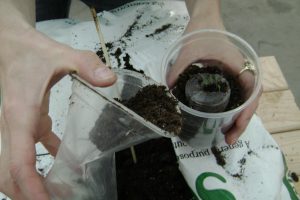
Not everyone has the time to look after their garden. You can step in to water plants, prune shrubs, or check on greenhouses while neighbours are away. Some may only need holiday cover, while others may require regular assistance.
Deadheading or feeding houseplants can bring in extra income once neighbours trust you. With that, you can expand to regular visits, seasonal jobs, and a reliable source of earnings.
Offer compost or worm castings for sale
Garden waste can be turned into something valuable. Compost at home or keep a worm bin, and you can produce nutrient-rich material that someone may be happy to buy. Bag it up in small amounts for neighbours or sell it at local markets.
Local allotment holders and small growers are always looking for natural soil boosters. Set up a small subscription where they collect a bag each month. Or try something more fun, like a swap system where produce is traded for compost.
What Can I Grow in My Garden to Make Money
This section will show you different options and where they might sell:
Kitchen herbs for steady demand
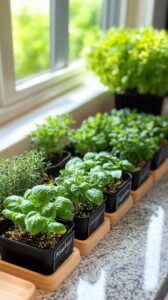
Herbs like basil, coriander, and parsley aren’t quick one-offs like microgreens. They don’t stop at one harvest; you can cut and watch them grow back for more. This means more sales for you!
You could also raise herbs in small pots. A bunch cut and ready to cook with will suit one type of buyer. And another person might prefer a plant they can water and pick from themselves.
Flowers to cut and sell
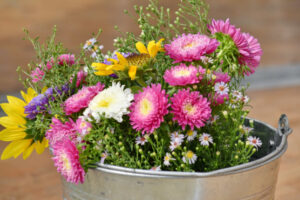
Sunflowers, sweet peas, and dahlias are all favourites in the UK. When the blooms open, cut the stems and you’ve got something to sell. Sunflowers are striking, sweet peas give you loads of stems, and dahlias bring colour to the bunch.
Have a bucket of water ready when you cut the flowers so they stay fresh. Sell them in simple bunches to neighbours or prepare them for markets and events. Watch what sells in your area and stick more of those in the ground next time!
Soft fruits for seasonal sales
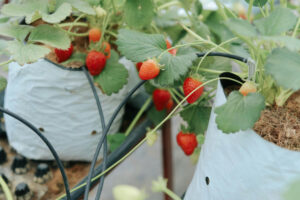
Strawberries, raspberries, and currants are always in demand when they’re in season. The key is timing, as they sell best when they’re freshly picked and local.
A few rows of strawberries or a small run of raspberry canes can give you a crop worth selling. Pick them in the morning, keep them cool, and pass them on the same day to keep the flavour.
Presentation matters, too! For instance, small punnets for locals, bigger trays for cafés and bakeries.
Lettuce and leafy greens
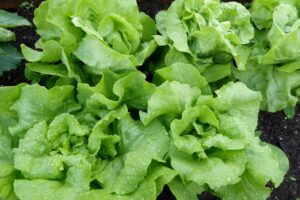
Lettuce, rocket, and spinach don’t take long to grow, which means you can have fresh leaves ready most weeks. Try harvesting a little at a time rather than all at once. That way, you always have something fresh to offer without running out.
Pack them in clear bags or small boxes with labels that include the cut day and/or mix type.
Houseplants and potted plants
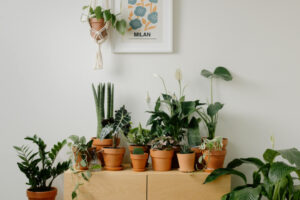
People often prefer something ready to pop into their home or garden, cue potted plants. Grow hardy perennials, succulents, or easy houseplants in pots. You can also split or propagate those you already have to increase stock. Offer small pots for casual buyers and bigger plants for ready-to-go options.
Garlic and onions
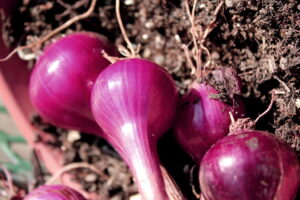
Garlic and onions require little effort once planted and store well after harvest. Plant them in autumn, and they’ll be ready by summer. A small area can produce enough to sell over time, and rotating types each year keeps it productive.
Chillies and peppers
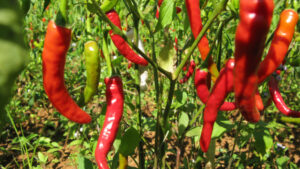
(Image Credit: Wikimedia Commons)
Chillies and peppers grow well in pots or a sunny spot. A handful is enough to share with neighbours or take and sell to a local market. For instance, grow a mix of hot and mild chillies, then harvest regularly – store them dry to keep in good condition. And to have chillies ready more often, plant in stages or use pots so they ripen at different times.
How to Make Money from Your Garden: Round-up
There are lots of ways to earn from your garden, and most don’t need much space or expensive equipment. You could grow microgreens, potted plants, herbs, flowers, fruits, or chillies. There’s something for almost every gardener!

